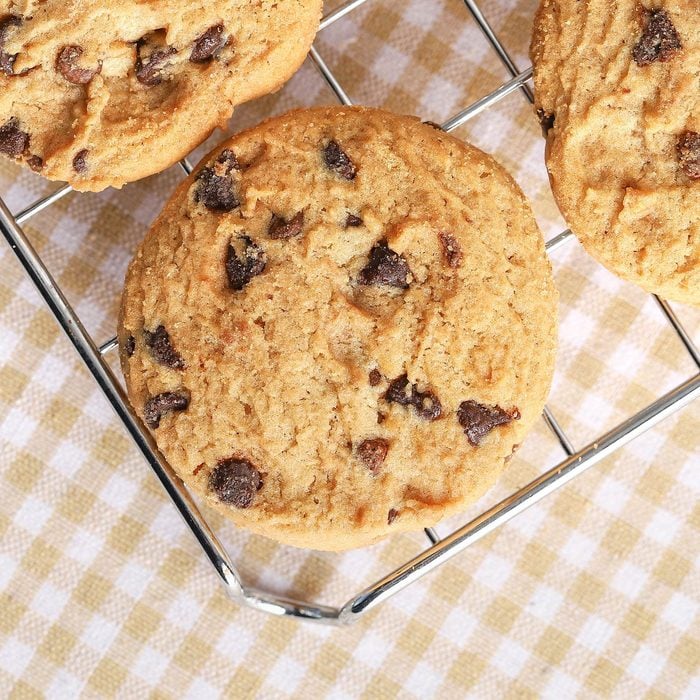 via merchant
via merchant
Best Overall Blend
King Arthur Flour Measure for Measure Gluten-Free Flour
King Arthur is known for their all-purpose flour, and they brought the same quality to this gluten-free blend. Made using a mix of rice flour, sorghum flour, tapioca and potato starch, plus a dash of xanthan gum to bind, this flour blend works with baking recipes from scones to quick breads to cookies—no fancy math or additional ingredients required.
Pros
- Earns high marks for texture and taste
- Top-rated for making lightweight, non-gummy baked goods
- Well-priced
- Sourced non-GMO, non-dairy and kosher
- Fortified with iron, calcium and vitamin B
Cons
- Not ideal for yeasted baked goods, like bread
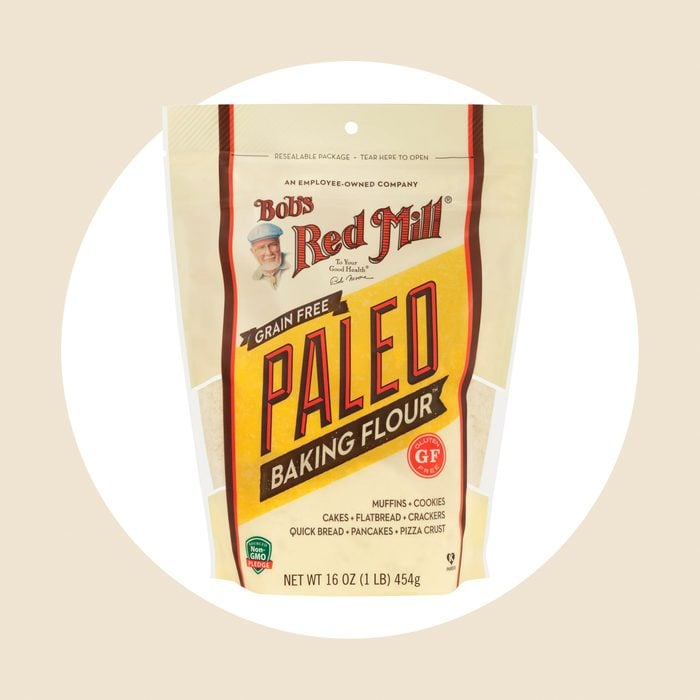 via merchant
via merchant
Best Paleo Blend
Bob’s Red Mill Paleo Baking Flour
Bob’s Red Mill is known for its vast array of gluten-free flours, so it’s no surprise that this gluten-free flour mix is among the most popular. This paleo-friendly, grain-free mix combines nut flours and root starches: almond flour, arrowroot starch, coconut flour, and tapioca. It has a higher protein content than the average flour mix, which makes this blend filling and perfect for paleo recipes, from a batch of morning pancakes to a tasty homemade pizza.
Pros
- Works for both sweet and savory recipes, including flatbreads, crackers and pizza dough
- Grain-free, gluten-free, dairy-free and bean-free
- Kosher and vegan
- Non-GMO
- 10 net carbs per serving
- Good source of fiber
Cons
- More expensive than other blends
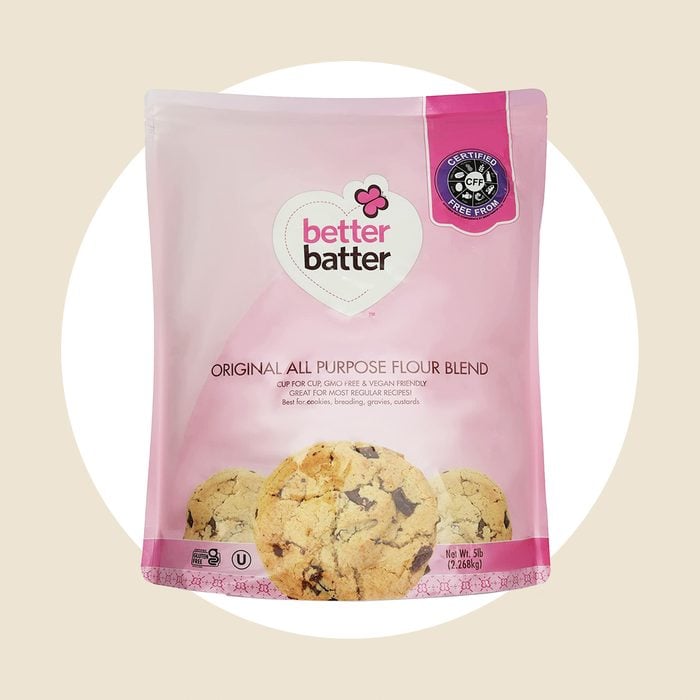 via merchant
via merchant
Best Allergy-Free Blend
Better Batter Original Blend, Multipurpose Certified Gluten-Free Flour
Ideal for anyone baking for people (or a group!) with multiple allergies, this Better Batter blend is made without the top 11 allergens: wheat/gluten, dairy, fish, shellfish, peanuts, tree nuts, soy, egg, mustard, sesame and sulfites. In fact, the entire facility that produces the blend is allergen-free, eliminating the risk of cross-contamination.
Use Better Batter flour in any recipe—the bag even includes instructions for adapting yeasted bread recipes, which are notoriously the most difficult to adapt to GF.
Pros
- Safe for most allergy concerns
- Earns top ratings for taste and texture (no grit!)
- Versatile enough to use in both sweet and savory baking
- Adaptable into yeasted bread recipes
Cons
- Pricey
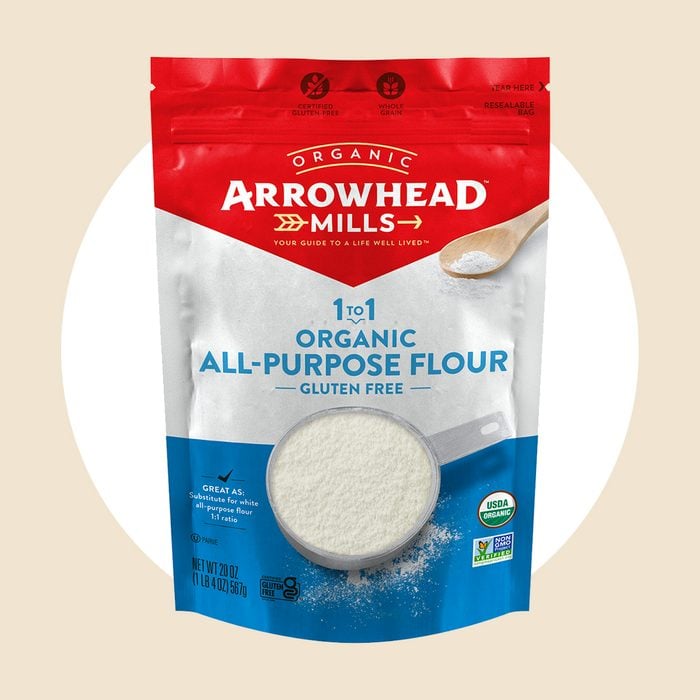 Courtesy Arrowhead Mills
Courtesy Arrowhead Mills
Best Affordable
Arrowhead Mills Organic Gluten-Free All-Purpose Flour
A respected organic flour mill, Arrowhead Mills is known for fresh, nicely textured whole grain flours. This gluten-free mix is among the healthiest blends available, made with whole grain brown rice and millet flour, as well as white rice flour and tapioca starch. Arrowhead Mills’ GF mix works as a 1-to-1 substitute for wheat flour, and reviewers salute its versatility: The mix makes good sweet bakes but can also make yeasted doughs like pizza and bread.
Pros
- Affordable
- Adaptable into sweet and savory recipes, including yeasted doughs
- Healthy whole grain ingredients
- 13g whole grains per serving
- Organic and non-GMO
Cons
- Some reviewers found the whole grain taste stronger than other GF blends
 via merchant
via merchant
Best for Bread
Judee’s All-Purpose Gluten-Free Bread Flour
Gluten-free bread bakers rave about Judee’s Gluten-Free Bread Flour, which is specifically formulated for baking gluten-free bread recipes, as well as bagels, pizza dough and pretzels. The blend includes two kinds of binding agents—guar gum and xanthan gum—which mimic the structure and strength of gluten for a lofty, chewy crumb. They also add dried egg whites, which boost the protein in the dough. The blend of tapioca, potato and corn starch, plus rice and corn flour, has a neutral flavor. The dough also has sugar and salt added, so most recipes require only adding yeast, oil and water.
Pros
- Perfect for bread lovers
- Well-priced
- Just add oil, water and yeast
- Large bags available for avid bakers
Cons
- Starch-heavy
- Added salt and sugar might contradict individual dietary restrictions
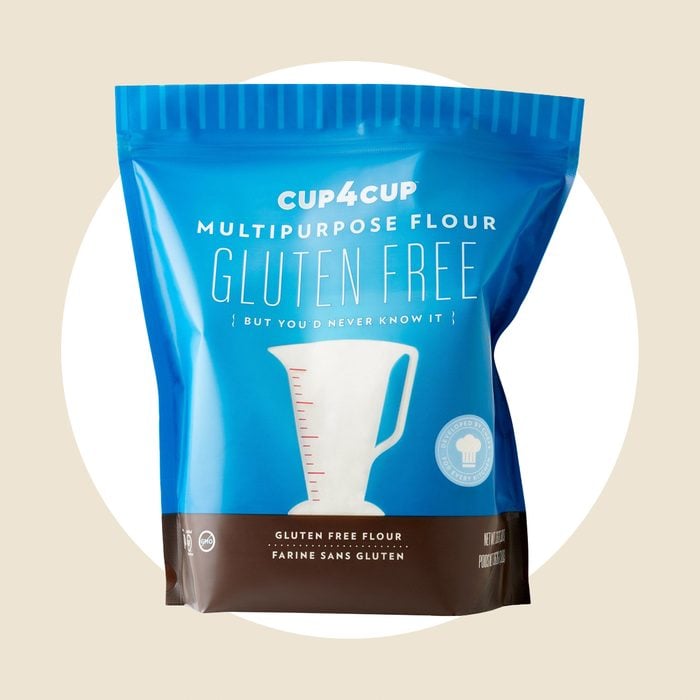 via merchant
via merchant
Best for Lightweight Pastries and Cakes
Cup4Cup Gluten-Free All-Purpose Flour
Developed by the chefs at the prestigious restaurants of Thomas Keller, Cup4Cup aims to be the exact equivalent of a cup of traditional flour. Same flavor, same texture, same measurements. The rave reviews of Cup4Cup Gluten-Free All-Purpose Flour suggest that they were successful!
This GF blend is super versatile, working in baked goods, including cookies, scones, pie crust, cakes and muffins. Cup4Cup also works for culinary tasks like making gravy and sauces, and ambitious chefs can even use it to make homemade pasta.
Pros
- Among the highest-rated mixes
- Lightweight blend yields top marks for texture
- Neutral flavor works in most recipes
- Available in larger bags
- Non-GMO
- Kosher
Cons
- High starch content
 via merchant
via merchant
Best Self-Rising Flour
Orgran Gluten-Free Self-Raising Flour
While wheat-based self-rising flour is relatively easy to find, a gluten-free equivalent is rarer. Orgran’s GF Self-Rising Flour includes leavening agents, so this blend is ready to use in your favorite recipe calling for self-rising flour, like biscuits and cakes. As a bonus, the blend is entirely allergen-free and suitable for vegan, keto and paleo diets, too. Reviewers give it top marks for convenience and taste.
Remember, it’s not interchangeable with other flour blends, since it contains leavening and will throw off the balance of any recipe calling for all-purpose flour.
Pros
- One of the rare GF self-rising blends
- Top-rated for flavor and texture
- Allergen friendly: no wheat/gluten, dairy, fish, shellfish, peanut, tree nuts, soy, egg, mustard or sesame
- Keto, paleo and vegan
Cons
- The least versatile blend
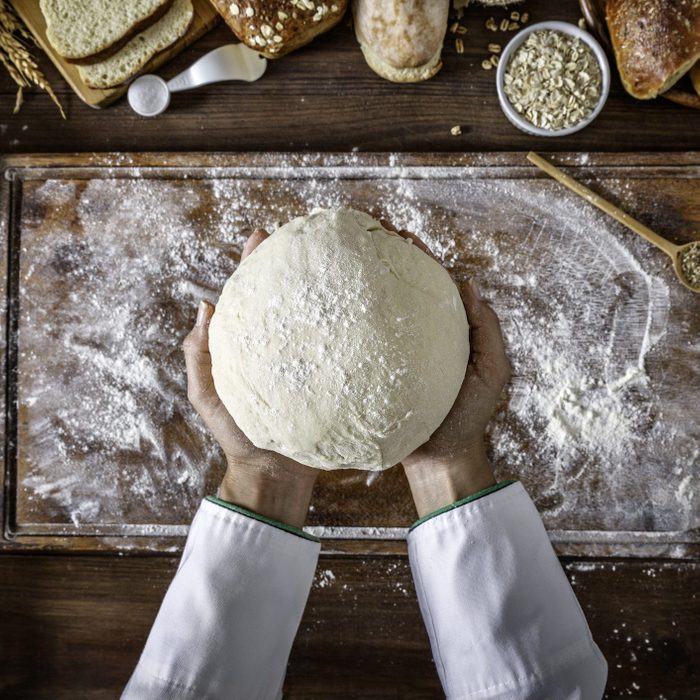
Tips for Baking with Gluten-Free Flour
The best thing about any gluten-free flour mix is that you shouldn’t need to change your baking style too much—just measure into your favorite recipe and go! But here are answers to a few FAQs.
What do you look for when buying gluten-free flour?
In general, gluten-free flours will be clearly labeled with a GF mark, especially flour blends. If you have other allergies, check the ingredients list and nutrition label for any cross-contaminants.
Can you substitute gluten-free flour for regular flour in any recipe?
In general, you can sub an all-purpose GF flour mix in most recipes for quick breads, pancakes, cookies and denser cakes quite easily. Gluten recipes with more demanding, precise textures—think the chew of yeasted bread, the flakiness of a croissant or the airiness of angel food cake—are more difficult. These require specialized flour blends (we’ve included some above), as well as expert GF baking experience, since elements like liquid content might need adjusting in addition to the flour swap.
What are the healthiest gluten-free flours?
In general, whole grain and nut flours are the healthiest; they’re richer in nutrients and proteins. Less healthy are starches and white flours, like white rice and tapioca. Most flour mixes contain some balance of both whole grain (or other high-protein option) and starch to achieve the proper texture. A starchier, lighter blend definitely falls under the category of special treat—but that’s to be expected when making dessert!
Psst: Many of our top-rated gluten-free recipes are naturally gluten-free.

